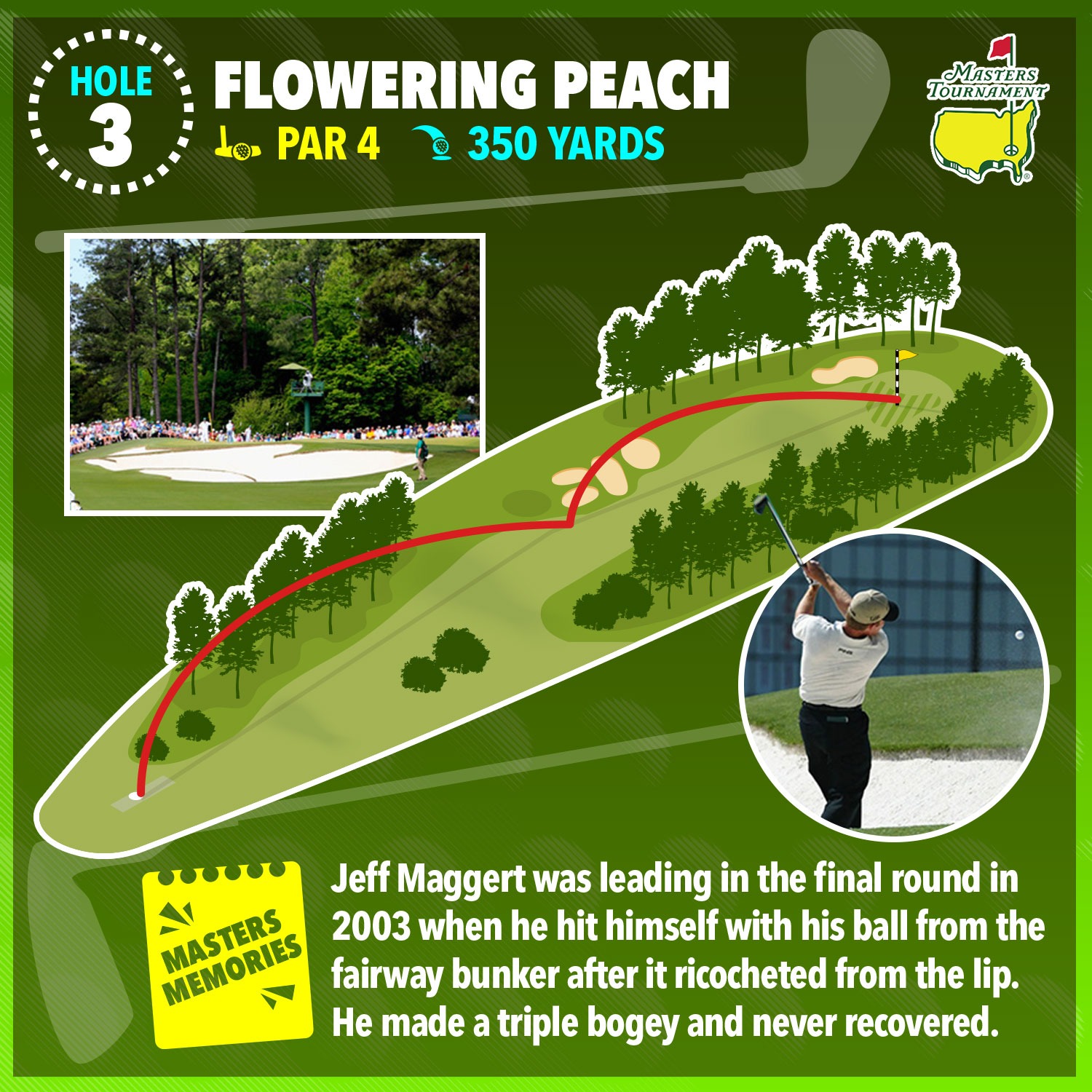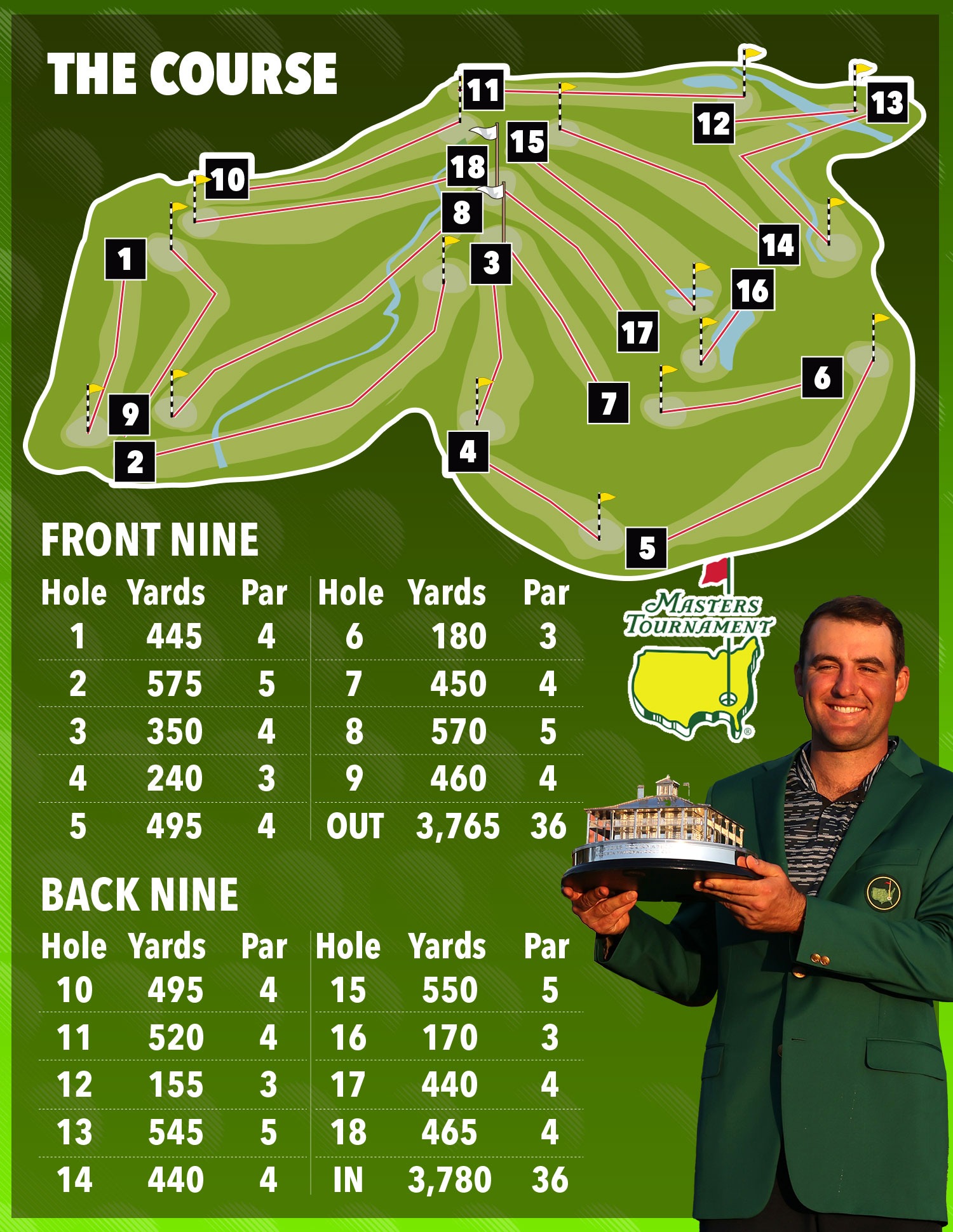The Masters: A Golfing Tradition
The Masters is a golf tournament like no other, steeped in tradition and drama. Held at the iconic Augusta National, it is a weekend that captures the hearts of fans every April. From the coveted green jacket to the legendary players, the Masters never fails to deliver unforgettable moments.
Augusta National: The Real Star of the Show
While the players make history on the course, Augusta National is the true star of the Masters. Each hole, from Tea Olive to Holly, presents its own unique challenges and has witnessed some of the greatest moments in golfing history.
Exploring the Holes
1st – Tea Olive
Known as one of the hardest holes on the course, the 1st requires a nerve-wracking tee shot and precise approach to the green.
2nd – Pink Dogwood
This hole offers excitement and challenges, with players needing to navigate a narrow shoot at the front of the green.

3rd – Flowering Peach
Long hitters may have an advantage on this hole, while others will strategize for a birdie opportunity.
4th – Flowering Crab Apple
A massive green awaits players, but they must hit the correct part of the surface to set up a birdie chance.
5th – Magnolia
A demanding par four, the 5th requires players to avoid bunkers and navigate a sloping fairway.
6th – Juniper
Players will face an undulating green and a solitary bunker as they aim for a favorable pin position.

7th – Pampas
Ultimate control is key on this hole, with five traps guarding the green and a birdie within reach.
8th – Yellow Jasmine
An uphill challenge, the 8th offers a chance for eagle if players can avoid the bunker and reach the green in two shots.
9th – Carolina Cherry
A drive down the right side sets up the best angle for a challenging green that slopes severely.
10th – Camellia
This monster par four plays tough due to its downhill nature and sloping green.

11th – White Dogwood
The start of Amen Corner, this hole demands precision to avoid hazards and secure a good score.
12th – Golden Bell
Deceptively simple yet endlessly complicated, this hole requires careful club selection and skill to avoid water hazards.
13th – Azalea
Lengthened in 2023, this hole is a brilliant risk/reward challenge that has determined Masters champions in the past.
14th – Chinese Fir
Without bunkers, this hole tests players with a nerve-racking green that slopes significantly from left to right.

15th – Firethorn
A crucial second shot is key on this par five, with water hazards and bunkers adding to the challenge.
16th – Redbud
A hole known for potential hole-in-ones, the 16th offers a thrilling opportunity for players.
17th – Nandina
A straightforward tee and second shot lead to a challenging green with no easy up and downs for par.
18th – Holly
The final hole offers an iconic tee shot through trees, leading to a green split into two tiers and well-guarded by bunkers.

Frequently Asked Questions
How can I determine my handicap in golf?
A golf score is a numerical measurement of a golfer’s potential ability. This allows golfers of different levels of skill to compete on an equal basis. To establish a handicap, you need to submit scores from a minimum number of rounds (the specific number may vary by country’s golf association) to your golf club’s handicap committee or a handicap service. These scores are adjusted for the difficulty of the course and the tee from which you played, using a specific calculation method that averages the best differential scores from the rounds submitted. You can find out how handicaps are calculated by contacting your local golf club or national golf association.
Is it necessary to take lessons from a professional golf instructor?
It’s not necessary to take professional lessons, but it can greatly improve your game. This is especially true for beginners and intermediate players. A professional instructor can offer personal guidance, correct flaws with your swing and help you to understand the mental side of the game. They will also give advice tailored to your playing style. In some cases, self-teaching results in bad habits. Even seasoned professionals can benefit by getting a tune-up with a golf pro every now and then to ensure their techniques remain sound. Lessons can prove to be an excellent investment as they lead to increased enjoyment and improved scores on course.
How can I select the best golf club for my shot?
The distance you are playing, the wind condition, hazards, as well as your own level of expertise, will determine which club to choose. Woods are typically used for longer shots, whether you’re playing from the tee box or fairway. Irons become more important as you approach the green. The lower-numbered (like a 4) and higher-numbered (like a 9) irons will be used for your longer approach shots. A pitching or sand wedge is often chosen for precision shots near the green, and, of course, a putter is used for putting on the green. Estimating the distance to the target and understanding how far you can typically hit with each club can greatly aid in club selection.
What is proper golf course etiquette and how do I follow it?
Respecting golf etiquette is as vital as understanding the rules of the game. To do this, you must be aware of the pace and walk quickly between shots. Show consideration to other players by being silent and still while someone prepares to swing. Safety is a key factor – do not play a stroke until the group behind you is no longer within reach. You can take care of your course by repairing ball marks, raking bunkers and repairing divots. Dressing according to the dress-code of the course is polite.
Why is a pre-shot golf routine important?
A pre-shot routine helps establish consistency and focus before each golf shot, leading to better performance under various conditions. This can include identifying your target, visualizing how the ball will fly, practicing your swings, or aligning yourself to the target. Consistent routines can help improve mental preparation, as they provide a process that is familiar to fall back on when under pressure. The golfer can also manage his nerves better and avoid distractions. It is important to develop a routine which is both comfortable and repeatable but flexible enough to accommodate different shots.
What are the basic rules of golf?
The game of golf is governed by a comprehensive set of rules that are standardized by the R&A and the United States Golf Association (USGA). The essence is to move a golf ball from a teeing area into a hole using strokes or strokes that are in accordance with Rules. A few key principles of golf are: play the ball on its own, follow the course you’re playing, and complete the hole as quickly as possible. Penalties are incurred for rule breaches such as hitting the wrong ball, playing from the wrong place, and losing a ball. Golf etiquette, while not strictly part of the rules, is integral to the game, addressing considerations such as safety, consideration for others on the course, and taking care of the course.
What is the best way to maintain my golf club?
Care for your golf clubs will help them last longer and perform better. To keep your club heads free of dirt, use a soft-bristled toothbrush and soapy warm water after every round. Clean the shafts using a wet cloth to remove any dirt. Inspect grips, as they may need replacement every year, depending on their usage. Store your clubs in an area that is cool and dry, since extreme temperatures or moisture can cause them to be damaged. Headcovers can be used to protect woods and putters from scratches and dings during transport.
Statistics
- It is estimated that over 90% of dedicated golfers maintain their equipment regularly, which aids in performance consistency.
- About 85% of golf instructors recommend that new players focus on short game skills as an effective way to reduce their scores.
- Golfers who take lessons improve their game twice as fast as those who choose to learn through trial and error.
- Junior golf programs have seen an increase in participation by approximately 20% over the past decade, indicating growing interest among younger players.
- Players with a consistent pre-shot routine are 50% less likely to make a mistake due to external distractions.
- Studies show that practicing putting for at least 15 minutes before a round can improve a player’s putting accuracy by as much as 25%.
- Roughly 60% of golfers who maintain a handicap index see an improvement in their scores year over year.
External Links
topgolf.com
pgatour.com
golf-info-guide.com
njga.com
mytpi.com
golf.com
golfchannel.com
How To
How to Implement Effective Golf Routines
Set goals that you can achieve during each practice session. Divide your time between long drives, iron shots, chipping or putting and other shots. Use practice drills that target areas of weakness. Start with a warmup to prevent injury. To simulate the conditions of a real course, use different lies and target types. To get the best results, focus on each shot and treat it as though you were actually playing. To end the session on a positive, practice shots that you are confident with.

